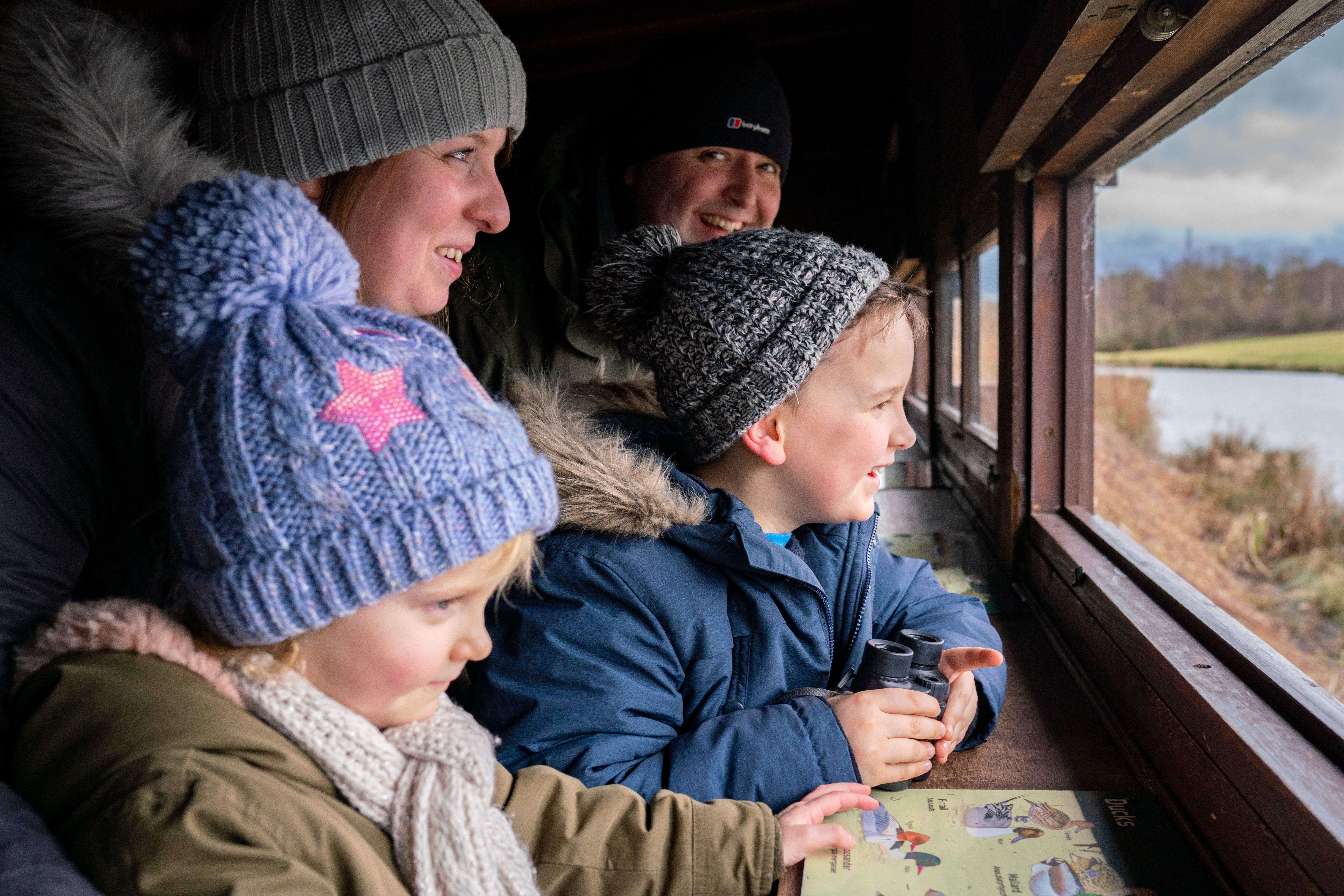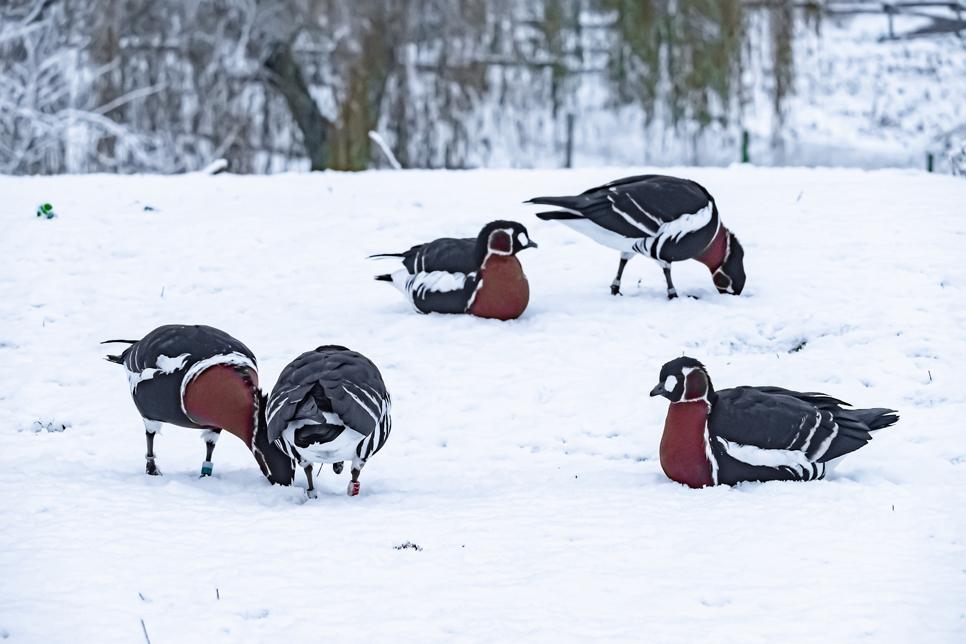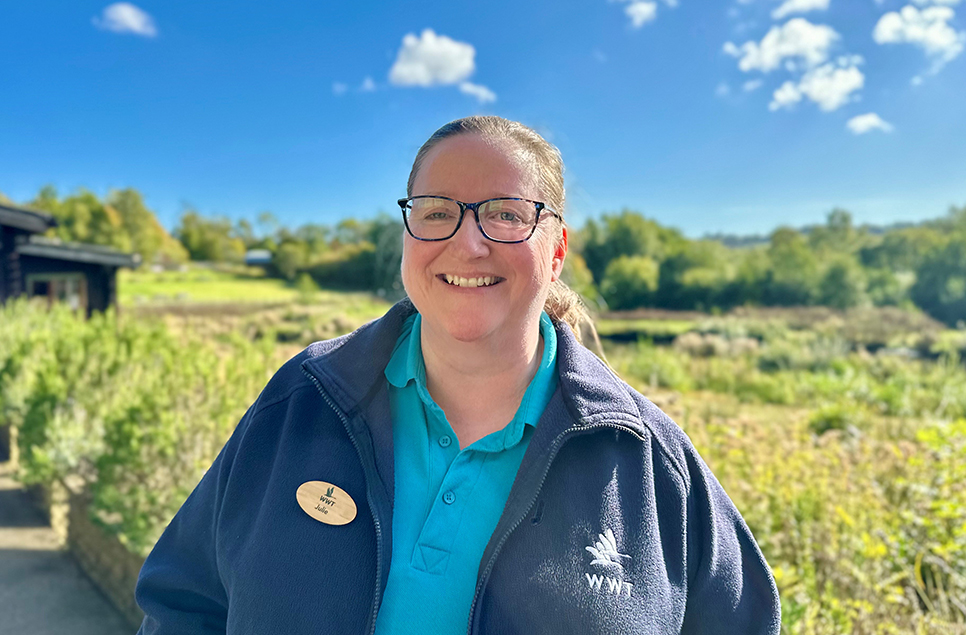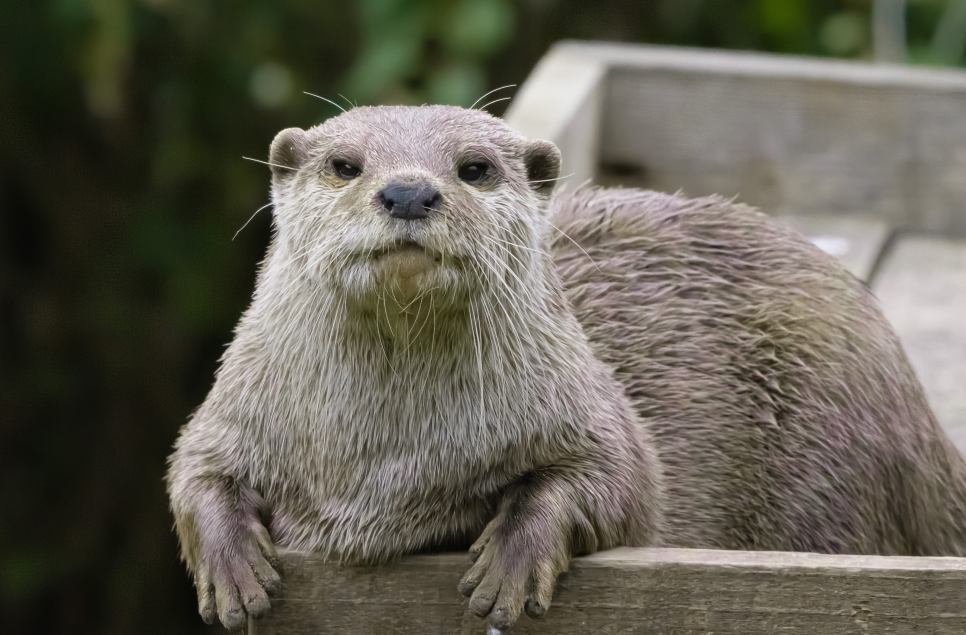Meet the team: Dan Morrison - Collection Team Manager
We're keen to introduce you to another member of our team who puts his heart and soul into caring for our collection animals. Dan Morrison has had a varied career since completing a Biology university degree, but always knew he wanted to work with animals. Find out what drives him and his tips for getting into the trade!
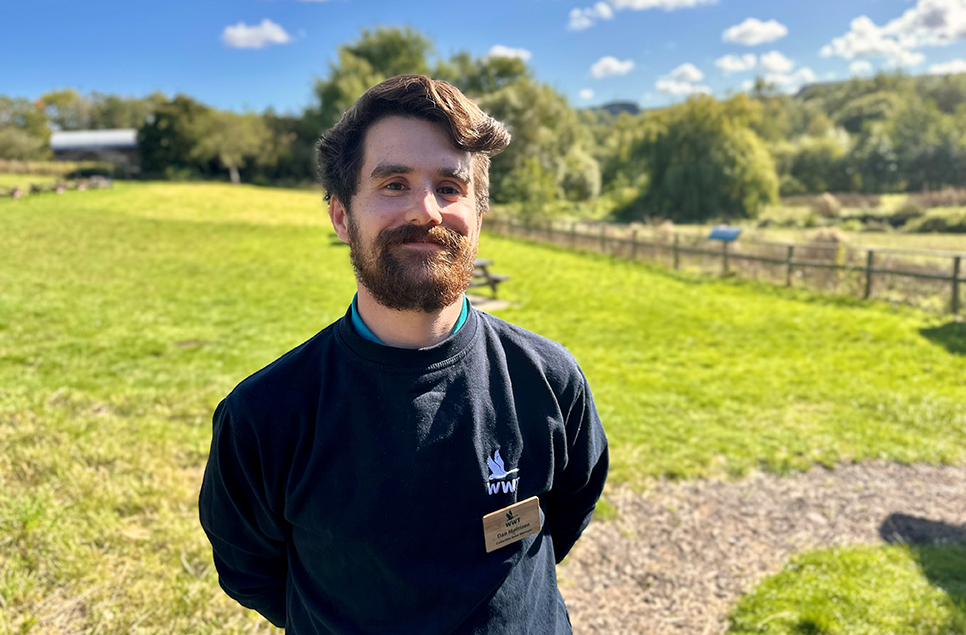
In this month’s Meet the team Q&A, we chat with Collection Team Manager, Dan Morrison to find out more about his experience with animal care and what inspires him to keep doing his bit for wetland wildlife conservation!
Thanks for chatting Dan, lets start by asking you the usual question, how long have you worked at WWT Washington?
I've worked here for over three years now, starting initially as a collection placement student. It's been a whirlwind of a three years!
What inspired you to become a keeper and work with animals?
My passion for the natural world was originally sparked by my Grandad. He was a keen naturalist with a vast collection of animal history books, and I have vivid memories of sitting on his knee as he read to me. I was absolutely blown away by the incredible diversity and wonder of the natural kingdom. Those early moments helped me develop a deep respect and curiosity that has stayed with me ever since.
Although I studied biology at university, it wasn’t until after graduation, when I volunteered at a small local zoo called Valley Wildlife (formerly Mayfield Animal Park) in Sheffield, that my ambition to work in animal care truly took off. Valley Wildlife was known for its herds of alpacas, but what really stood out was the amazing team who nurtured their volunteers and staff, pushing us to develop professionally. That supportive environment left a lasting impression and has influenced my approach as a Collection Team Manager at WWT.
I’ll never forget Andrew Jonas, the owner of Valley Wildlife, who supported me wholeheartedly—helping me prepare for my application and interview for the Living Collections Placement role at WWT Washington in 2022. Thanks to his encouragement, here I am, three years later, still loving this role!
The journey wasn’t easy. It took four years after graduating before I landed my first full-time role in animal care, which happened to be the placement at WWT Washington. During those years, I worked full-time in various roles—from hospitality to citizens advice and even the civil service—while volunteering on every day off at local animal parks like Valley Wildlife to build the hands-on experience I needed. Although challenging, those years taught me countless transferable skills that have been invaluable in my career so far.
Looking back, I can honestly say I wouldn’t be where I am today without the support and advice from so many wonderful people along the way. To all of them, I am truly grateful.
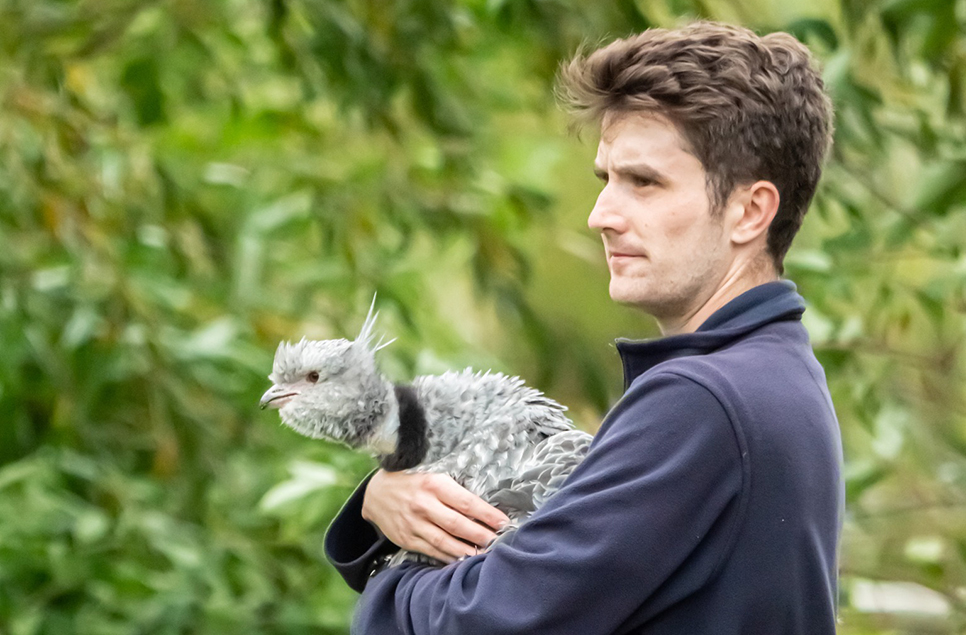
Can you describe a typical day in your role as Collection Team Manager?
Anyone who works in animal care knows that no two days are ever quite the same—that unpredictability is part of what makes this job so exciting and rewarding.
Typically, my day starts with a morning catch-up with the team. This is a crucial time for us to discuss the day’s priorities, allocate tasks, and ensure everyone has the support they need. Teamwork really is at the heart of what we do.
After that, I’ll usually be involved in helping out with the daily feeds—making sure our birds and otters are well nourished and in top condition for the day ahead. It’s important work that sets the tone for their welfare.
Once the routine tasks are complete, I often switch gears to administrative duties back in the office, catching up on paperwork, planning, and coordinating projects. But during this time of year, you’re just as likely to find me outside with a strimmer, helping manage vegetation growth. You’d be surprised at how quickly the plants can take over—it’s a constant balancing act between keeping habitats healthy and maintaining the natural environment for our animals.
When needed I also help out with conducting our otter and flamingo talks. These sessions are a wonderful way to connect visitors with the animals and share important conservation messages.
People also often assume we spend our time cuddling animals or playing with them, or they picture a very clean, glamorous version of the job. That couldn’t be further from the truth! The reality is, direct contact with the animals is minimal. As any responsible zoo, we aim to keep our animals as natural and stress-free as possible. The only times we might handle them are for health checks, treatments, or during necessary moves such as transfers between enclosures or other collections.
Most of our time is actually spent on essential behind-the-scenes work like welfare observations, preparing diets, cleaning enclosures and ponds, maintaining habitats, and supporting enrichment or breeding programmes. Depending on the season, we might also be doing things like building fence lines, crafting enrichment devices or nest boxes, vegetation management, or preparing for breeding season.
It’s physically demanding work, and yes — it can get pretty dirty! We’re outdoors in all weathers, rain or shine, and often knee-deep in mud or worse. But it’s all part of providing the best possible care for the animals. As my old boss used to say: “Never trust a clean zookeeper!”
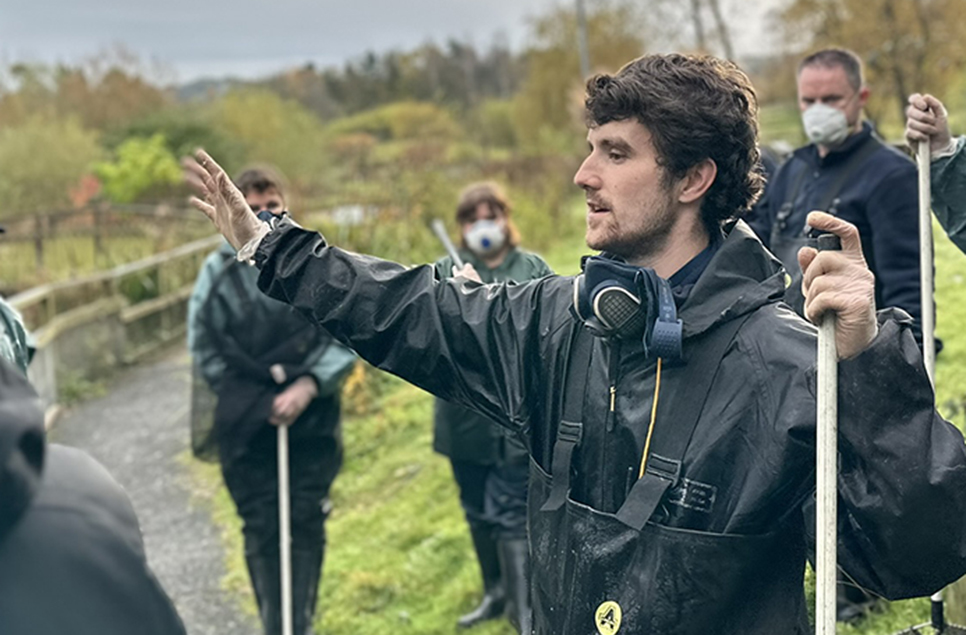
What are the most rewarding aspects of your job?
This might sound a bit cliché, but honestly, the most rewarding part of my job is the people. Of course, the animals are incredible and a big part of why I do what I do—but it’s the connections I make with people that truly make it special.
Whether it’s working alongside the passionate and dedicated team here at WWT Washington or engaging with our wonderful visitors, the relationships and shared enthusiasm are what keep me motivated every day. Everyone here cares deeply—not just about the animals, but about each other and the site itself. Being part of such a committed and inspiring group is a real privilege.
On top of that, I genuinely love taking the time to chat with visitors as they explore the collection. Hearing about what they’ve enjoyed seeing, sharing interesting facts, and simply connecting with people often turns out to be the highlight of my day. Those moments of interaction help foster a greater appreciation for the animals and the conservation work we do, making all the effort worthwhile.
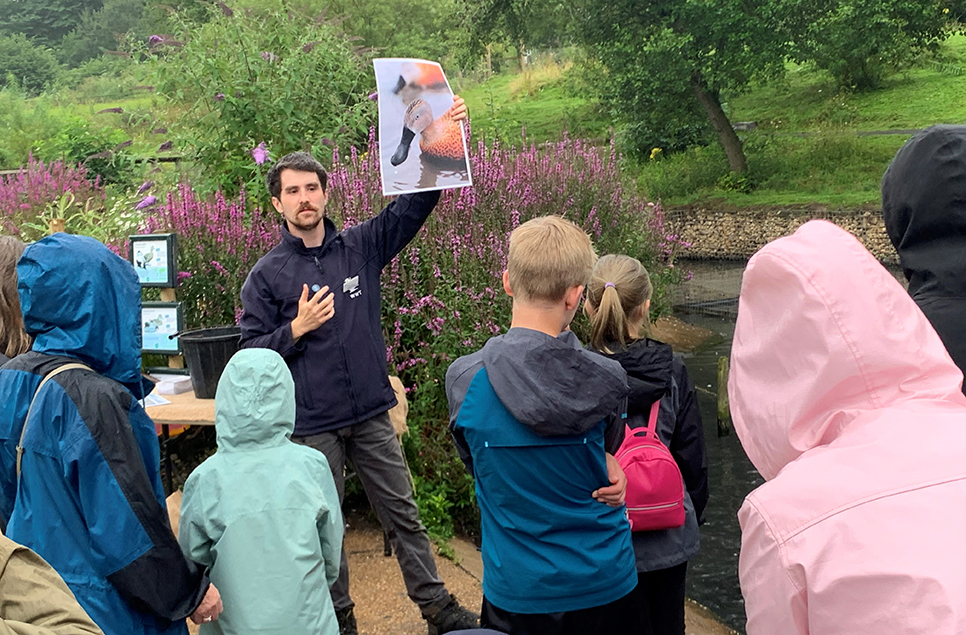
What are some of the challenges you face in caring for animals?
As you can imagine working with animals can be a bit of a rollercoaster emotionally, inevitably with the soaring highs, can come some lows.
Caring for such a wide variety of species comes with many challenges. Animals can’t tell us when something is wrong, so our team must rely on close observation, expertise, and experience to detect even subtle changes in behaviour or health. Some animals require specialist care, tailored diets, modified enclosures, or long-term treatment plans — all of which must be carefully managed to maintain their quality of life.
It can also be emotionally challenging, especially when an animal isn’t doing too well despite our best efforts or when we have to make the difficult decision to say goodbye. These moments are never easy, but they are handled with great care, respect, and compassion.
Thankfully, we are incredibly fortunate to have a dedicated team of vets, keepers, and support staff who work tirelessly to ensure every animal’s physical and emotional wellbeing is a top priority. Their passion, knowledge, and commitment are what make it possible for us to ensure the highest standards of care and welfare. At the end of the day, our goal is always the same: to give each animal the healthiest, happiest life possible.
In terms of physical challenges, I’d have to say finding the balance to cover every aspect of our job depending on the season can present challenges sometimes. We have fingers in many pies on the collection and we dabble in everything from vegetation management, maintenance, public engagement and of course animal care, breeding and support. It’s what makes the job so rewarding, as you learn and become proficient in so many skills, but also can keep you on your toes! But again the collection team are amazing in balancing all these tasks and supporting each other when the need arises.
Do you have a favourite animal that you work with? What makes them special to you?
That’s a great question! The diplomatic answer, of course, would be that I don’t have favourites—but if I’m honest, I’d have to say Buster the Asian short-clawed otter and the male black swan from our Close Encounters exhibit are right up there.
Both have such distinct and memorable personalities. Buster is an absolute character—cheeky, playful, and full of chaotic energy. He’s just a big bundle of pure joy and never fails to bring a smile to my face.
On the other hand, our male black swan is almost the complete opposite. He’s stern, assertive and fiercely protective—especially during the spring when he’s guarding his partner and their cygnets. I’ve learned to be on my best behaviour whenever I'm around him! He even recognised me one day when I came in on my day off, which definitely surprised me. My partner wasn’t quite as thrilled about our ‘escort’ around Close Encounters that day!
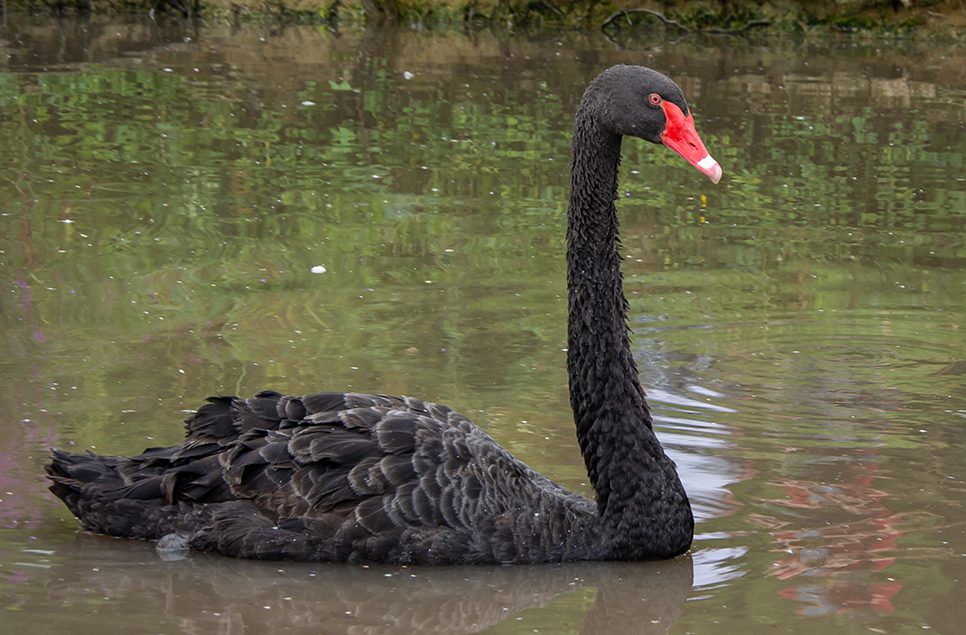
Can you share a memorable experience or interaction you've had with an animal?
One of the most memorable experiences I’ve had was when we reintroduced Buster back to his dad, Musa. It’s quite a story—Buster had been separated for a while due to a falling out with his mum, Mimi, who sadly passed away earlier this year. That was an incredibly difficult time for everyone involved.
After giving the otters time to grieve and adjust, we carefully planned to see if Buster and Musa could be reunited. Introducing animals after a long separation is always tricky and can be risky, so naturally, it was a nerve-wracking process. My colleague Dan Scott and I stood by, fully prepared and ready to intervene if needed.
But what happened next was truly heartwarming—the first thing they did was embrace and touch noses, showing a beautiful reunion. Then they spent the rest of the time swimming and eating together, like no time had passed at all.
That moment had a profound emotional impact on me. I’ll admit, I had a little tear of joy behind the Hunters Creek cabin, just as Dan was starting a public talk with a large school group. It was incredibly uplifting to see them reconnect and interact physically again—it was a powerful reminder of why we do the work we do, and a really special moment for everyone at Washington.
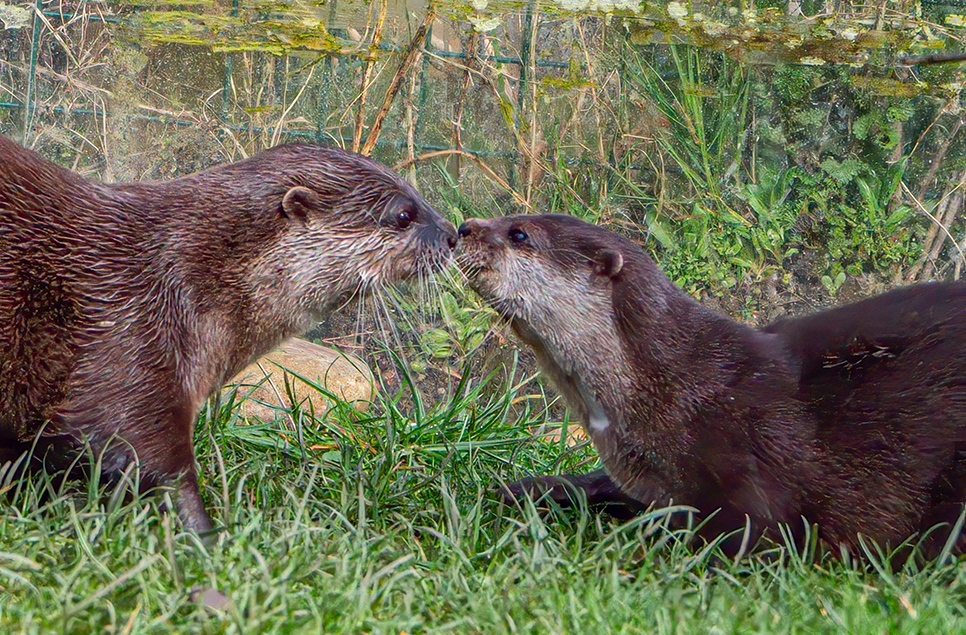
What kind of training or education is required to become a keeper?
In Britain, becoming a zookeeper isn’t just about loving animals — it requires the right qualifications, hands-on experience, and a deep commitment to animal welfare. Most zookeepers begin with a relevant qualification such as a Level 3 Diploma in Animal Management or a Foundation Degree or BSc in Zoo Biology, Animal Science, or Animal Management. These courses provide essential knowledge in animal health, behaviour, welfare, and husbandry. Many zoos also value the DMZAA (Diploma in the Management of Zoo and Aquarium Animals) — a specialist, industry-recognised qualification that's often completed while working in a zoo setting.
However, qualifications are just part of the story. Practical experience is absolutely crucial. Many people start as volunteers or interns to build their skills and get a feel for the physical and emotional demands of the job. Zookeeping involves early starts, working outdoors in all weathers, and a lot of physical labour — cleaning enclosures, preparing diets, and closely monitoring animal behaviour.
But it’s not just about routine care. Zookeepers also play a vital role in enrichment, training, conservation, education, and supporting veterinary care, especially when animals are unwell or require specialist attention. It can be emotionally challenging, particularly when dealing with animals that are sick, need extra care, or are approaching the end of their lives.
Overall, a qualification might get your foot in the door, but hands-on, practical experience in animal care is absolutely essential. This is a highly competitive field, and jobs don’t come easily — so my biggest piece of advice is to gain as much experience as you can, as early as you can. Whether it’s through volunteering, internships, or part-time work, just get stuck in. The more variety of animals you work with, the better.
Not only will this help build your confidence and skills, but it may also help you discover a particular area or species you’d like to specialise in — and it’ll certainly make your CV stand out when opportunities come up.
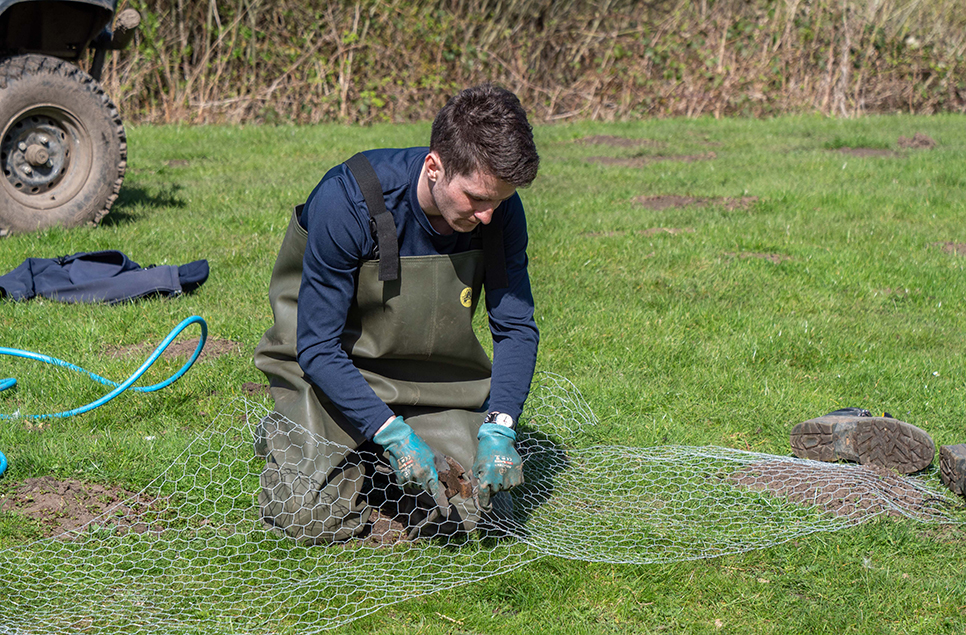
What advice would you give to someone aspiring to become a keeper or work with animals?
My biggest piece of advice is to get hands-on experience wherever you can. Whether it’s volunteering at a local animal centre, zoo, wildlife park, or vet practice — just get involved in anything that interests you. Give 100% and make the most of every opportunity. The more practical experience you gain alongside a relevant qualification, the better your chances of standing out when applying for a zookeeper position.
Speaking from personal experience, placement or internship roles can be a fantastic way to get your foot in the door at a zoo or zoological collection. These positions are sometimes unpaid, so it’s important to consider whether they’re financially viable for you. But if you can make it work, they offer invaluable, full-time experience, the chance to build your professional network, and sometimes even open the door to future job opportunities.
Most importantly — don’t give up. This is a competitive field, and rejection is part of the journey. If you’re passionate and truly want to pursue this as a career, keep going. Take every experience — good or bad — as a learning opportunity. If you don’t get a job, ask for feedback, reflect on what you could improve, and use it to shape your next application or interview.
I’ve been there myself. I had several unsuccessful interviews before I secured a placement at Washington. Each time, I adapted my approach and built my confidence. By the time I was offered the placement, I had a really solid idea of what to expect — especially since I’d even applied for that same role the year before!
So, stay committed, stay positive, and trust the process. If you keep learning and pushing forward, you will get there.
How do you foster connections between visitors and the animals in your care to promote conservation awareness?
I believe an open and collaborative approach is key to promoting conservation awareness. We strive to create engaging experiences that go beyond a typical zoo visit — whether through public talks, special events, or hands-on activities throughout the year. These opportunities help visitors gain a deeper understanding of conservation and the animals we care for.
For example, last year we trialled otter enrichment-building workshops, introduced new spotlight talks on some of our lesser-known waterfowl species, and are currently developing an exciting project focused on our Eurasian cranes. As the saying goes, variety is the spice of life — and we aim to offer something for everyone.
One simple but powerful way we like to foster these connections is by taking just a few minutes to chat with visitors. Whether it’s answering questions, sharing interesting facts, or just hearing what they love about the animals, these personal interactions help make conservation feel real and relatable. It’s in these moments that visitors often develop a stronger bond with the animals and with us and the message we’re trying to share. After all, we would not be here without the support of wonderful visitors.
It’s incredibly rewarding to hear families returning because someone they know was touched by animals like Musa and Buster or amazed by the incredible diversity of waterfowl species. Those moments show just how powerful these connections can be.
One of the most touching examples was the response to the passing of Mimi, one of our beloved animals. The outpouring of kind messages and support from visitors near and far really highlighted the deep bond between Mimi and our community. It was a heartwarming reminder of why we do this work, and those messages meant a great deal to our entire team during a difficult time.
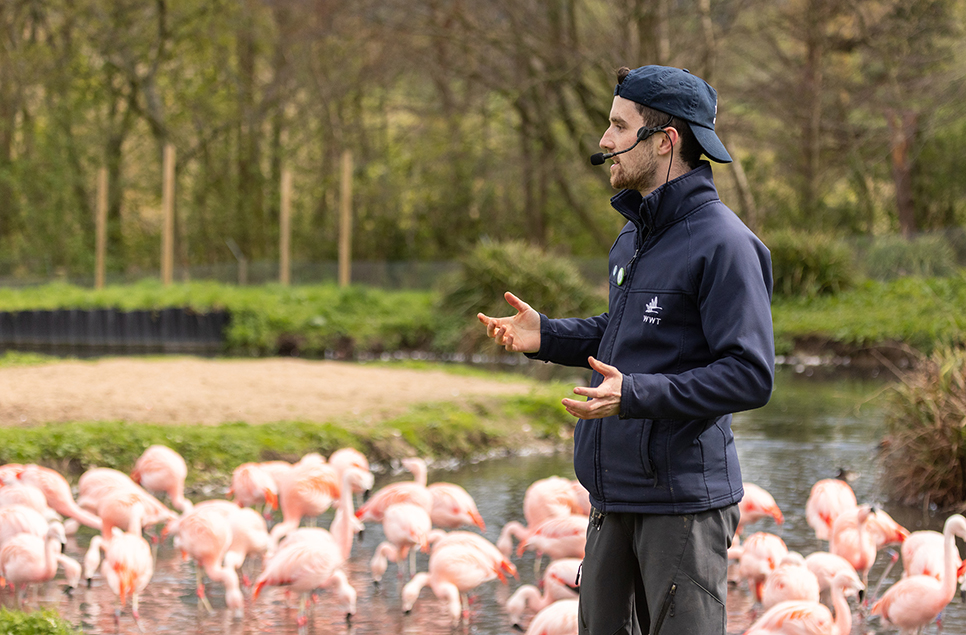
Are there any particular species or habitats you're passionate about protecting?
From a personal point of view, I’m especially passionate about Eurasian cranes and their conservation. When I was a placement student, I first learned about the Great Crane Project, and it completely blew me away — it was truly inspiring to see such a dedicated effort to bring this magnificent species back from the brink. Before this project Eurasian cranes had been extinct in the UK for over 400 years.
Since then, I’ve been fortunate enough to be involved in three breeding cycles of our cranes over the years. Two of those cycles were successful, resulting in young cranes being sent to other zoos across the UK to be paired up and contribute to the Great Crane Project. Being part of this process — helping to nurture and protect these birds so they can eventually support wider conservation efforts — has been incredibly rewarding.
One of the most powerful moments for me was seeing wild Eurasian cranes at Slimbridge. Witnessing these elegant birds in their natural habitat really brought home how important and impactful conservation projects like this are. It’s especially meaningful when the project is local, allowing you to have a direct connection to the work and see the positive difference it’s making with your own eyes.
Protecting species like the Eurasian crane reminds me every day why conservation matters — it’s about preserving the beauty and diversity of our natural world for future generations.
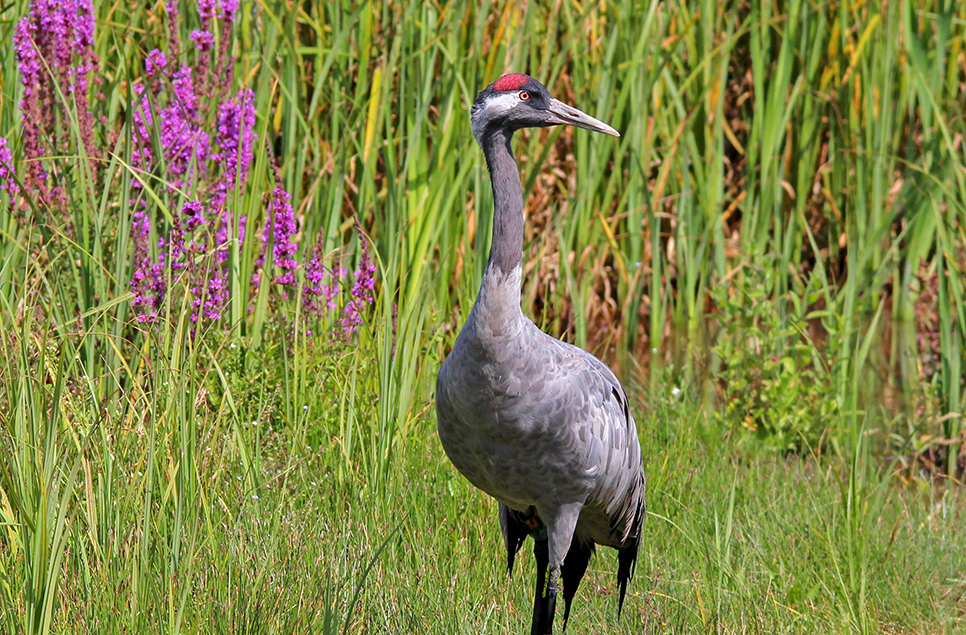
Fancy meeting more of our team?
We're introducing you to the team here at WWT Washington who are from a variety of roles within the trust, and who have a plethora of career and education backgrounds.
Meet the team